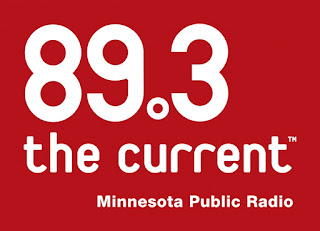89.3 The Current has won worldwide praise for its coverage
of the death of Prince and overwhelming response from fans. They also reached a lot of listeners.
Just released
Nielsen Audio estimates for May show that The
Current broadcast and and streaming audio were heard by an estimated
411,000 weekly cumulative listeners. This is the highest weekly cume ever for The Current. The number of weekly
listeners to the broadcast signal was up 26% from April. The station’s
streaming audio was up 51%.
According to PD Jim
McGuinn, the timing of events was one of the reasons for historic jump in
listening:
 |
| Jim McGuinn (Photos courtesy of MPR) |
The week of Prince’s passing
(which occurred on a Thursday around noon – first day of a new ratings week),
our cume went from a normal weekly number of around 280k all the way to
490k. We changed our programming to feature a chronological career
retrospective that day, and followed with a Prince A to Z marathon from the
Friday at 6p thru Sat at 11p.
As we reported in May [link], the coverage by The Current was heartfelt, informative and
compelling. It is still benefiting the station says McGuinn:
Our web traffic continues at a
higher level than before his passing. Anecdotally we definitely made new
friends, with hundreds of contributions in the days that followed his passing,
arriving from around the world.
We surpassed our drive goals
in May significantly, with lots of love for the Prince programming [plus] our
893 Essential Album countdown. It was a unique month, and a testament to
following our Programming instincts and responding to audience’s needs in the
moment. Much of the share and cume
rolled back towards normal in the weeks that followed. [Now] we’ll see what the long term ratings
[are] in the months to come.
 |
| Mike Henry |
News of the ratings
performance travelled quickly. Consultant
Mike Henry (who has worked with The Current in the past) said The Current’s success is an inspiration
to all noncom Triple A stations:
The big takeaway for me is
that if non-comm Triple A stations are marketed effectively, then there is a
higher audience ceiling available. [Rather than] preaching to the same
choir over and over, The Current’s marketing is testimony to the audience
potential possible to all pubradio Triple A stations.
THE CURRENT IS ALSO NUMBER
ONE INSIDE MPR HQ
Minnesota Public
Radio (MPR) has three distinct program services: 89.3 The Current, NPR News KNOW and Classical KSJN. Typically The Current has trailed KNOW in
listening. Not in May 2016. For the
first time The Current beat KNOW in weekly
cumulative listeners, though KNOW had a narrow lead in AQH.
Here is the topline
data for all noncom stations in the Minneapolis/St. Paul market (changes of more than 10% are
highlighted in yellow):
Note the success of
Urban Contemporary KMOJ, a gutsy station that is important civic and cultural
resource in the market.
WAMU’S WEEKLY LISTENERS
JUMPED BY ALMOST 100,000 IN MAY
WAMU’s May estimated
weekly listeners reached the highest number in recent memory.
MAY PPM TRENDS FOR OTHER INTERESTING NONCOM MARKETS:
These data are provided for use by Nielsen Audio subscribers
ONLY, in accordance with
RRC's limited license with Nielsen Audio.
|
||
|
Monday-Sunday 6AM-Midnight Persons 6+
|
||
|
Data Copyright Nielsen Audio.
Format
designations are the sole responsibility of Ken Mills Agency, LLC.
| ||






















